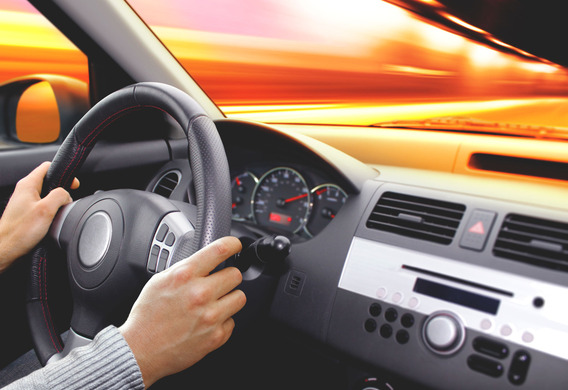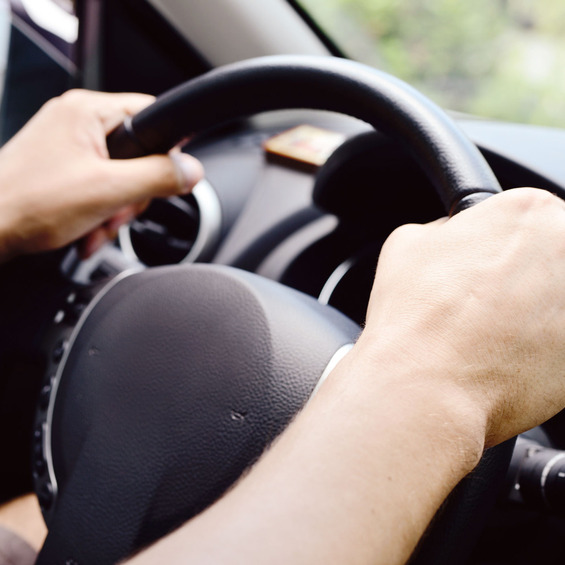
A lot of instructors are starting a practical lesson in driving a car with a phrase: "You have to keep the rouble like a bird: hard not to fly away, and not to choke."
The right handlebar is one of the basics of driving a car, which is primarily taught in a driving school. But after the passage of time, drivers develop their own, comfortable style-the truth, it is not necessarily optimal and does not always allow to rotate the steering wheel and, as a result, to steer the car on the right trajectory. The question is: Can the driver afford to steer the wheel in a way that is convenient for him and does it affect the efficiency of driving?
What affects the driver's seat
If the hands are located on the handlebars in a certain way, the driver will be able to react faster and take the car to a safe trajectory without loss of time.
The automotive industry is constantly developing and progressing, modern cars are equipped with more "sensitive" or "sharp" steering equipment. In this regard, experts agree that the rotation of modern cars should take place without intercepting the wheel-it helps to estimate the angle of the wheel in the most clear direction, and most importantly-continuously.
Do not forget about the airbags, which work in an emergency-hands should be placed on the steering wheel below the risk of injury.
Most car instructors recommend all motorists to use closed handlebars
In addition, if the three-wheel drive is to be controlled, it will be easier to control the trendy deviations of the car by overtaking the lateral spokes with thumbs.
How to hold the steering wheel
So there are two main driving forces: deep (also known as full or closed) and shallow (incomplete). In the first case, the handlebars are held in the palm of the hand and the fingers fully extend to the steering wheel. In the second case, the handlebars pass through the front of the four fingers and the thumb rests within the steering wheel.
Experienced car instructors recommend that all motorists use the closed stop. This is because the wheel does not drive the driver away from the driver's hand and he can keep the trajectory of the car.
With regard to handlebars, this formula is simply to be remembered: if you present the clock instead of the rudder, the right hand should be at 2 hours and the left hand must be 10 hours. The hands shall not be direct-so the muscles will be faster to become tired and the movements themselves will be squinted. It's best to hold the wheel so that your arms are bent in elbows. In this situation, the driver will be able to react more quickly to the road environment, as well as without special effort to intercept the rudder during the rotation.
arm movement
Driver's movement is classified as "operating", "idle", and "capturing" of the rudder.
- The worker movement is the movement of arms from the moment of the capture to the moment of release, and the brush is moving in the direction of the rudder.
- The idling movement shall then be idle, from the moment of release to the moment of release, and shall be followed by a free trajectory. In this case, the main thing is rationality of actions. That is, the hand should pass from the point of release to the point of capture at the optimum shortest trajectory (of course, before the steering).
- And, finally, capture and release is, as can be seen, a hand movement aimed at capturing or releasing the rudder at the moment of rotation so that the rudder does not stop at the wheel.
Right hand wheel arrangement is "2 hours" for the right hand and "10 hours" for the left hand
Instructor-trainers are advised to take the wheel from the outside, although more experienced motorists are able to absorb the rim from the inside. With an internal grip, the handlebar rotates in the opposite direction-that is, the right hand rotates the rudder to the left and the left hand turns to the right.
In order to be able to rotate the rudder in either direction, some drivers simply press the open palm to the rim-the truth, if the rudder is not equipped with an amplifier, it will require a lot of force to do so.

There are also a few more useful techniques in the management of reception. First, the sensitivity of the arm will increase, and the strength of the arm will increase if you use a closed handlebar. Second, you don't have to hold the wheel firmly, so your hands are faster, but it's not going to affect the steering. In all cases, except for off-road and rotating driving, the effort must be moderate.
So, during the movement, you shouldn't let go! It must always be kept, regardless of the speed of the movement, even if the vehicle is in a driveway and moves in neutral gear. The right hand position on the handlebar is "2 hours" for the right hand and "10 hours" for the left hand.







